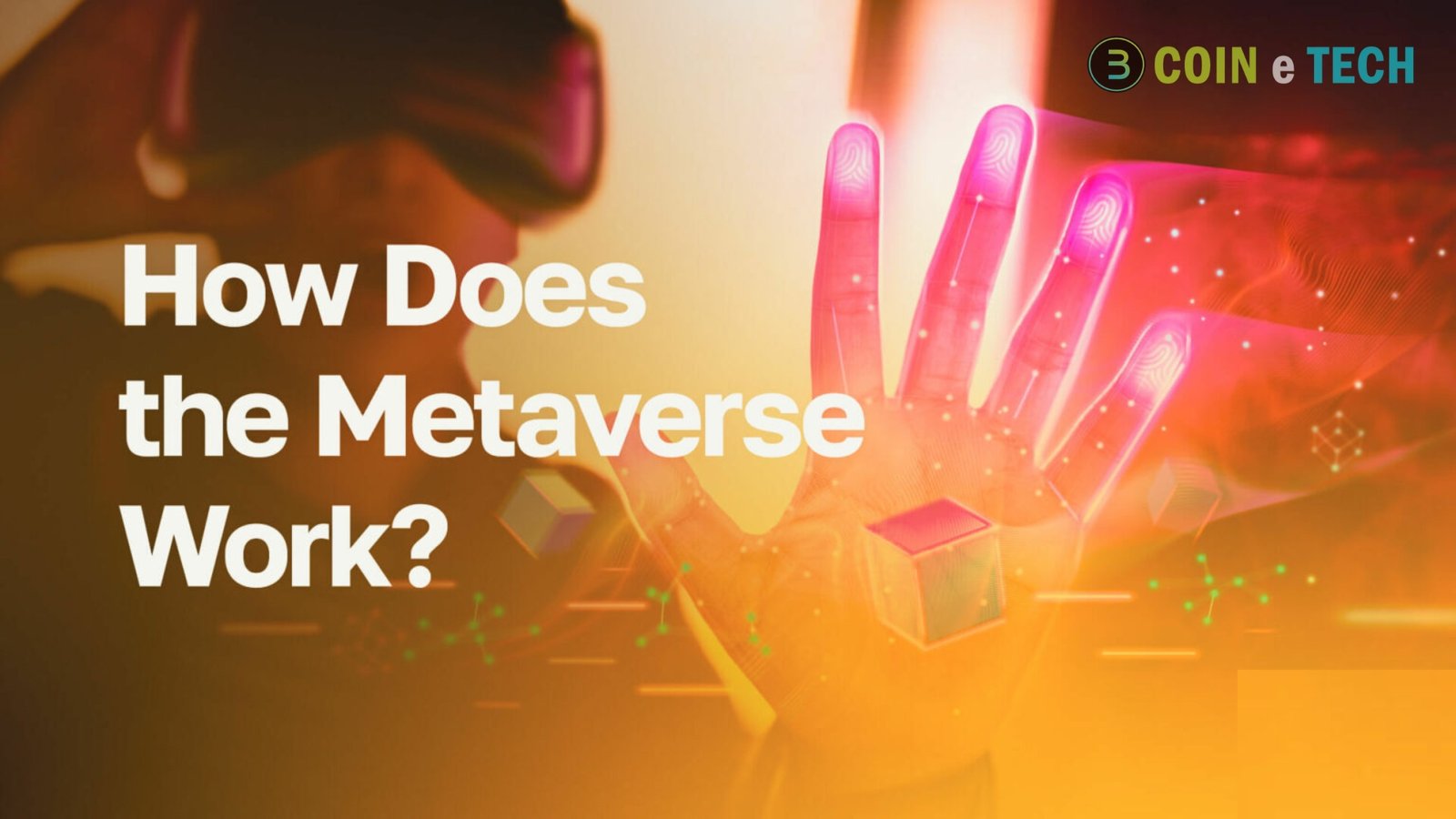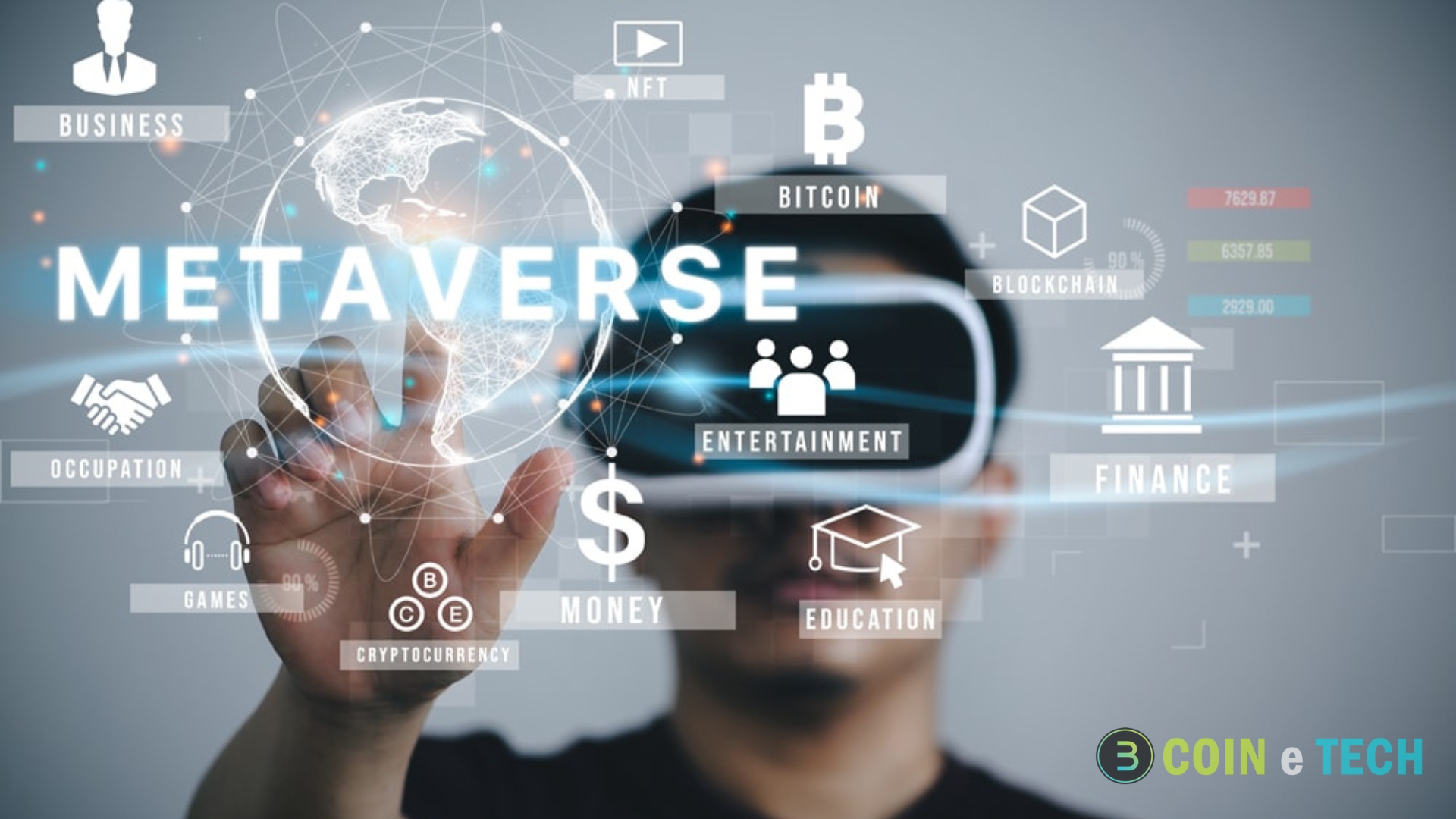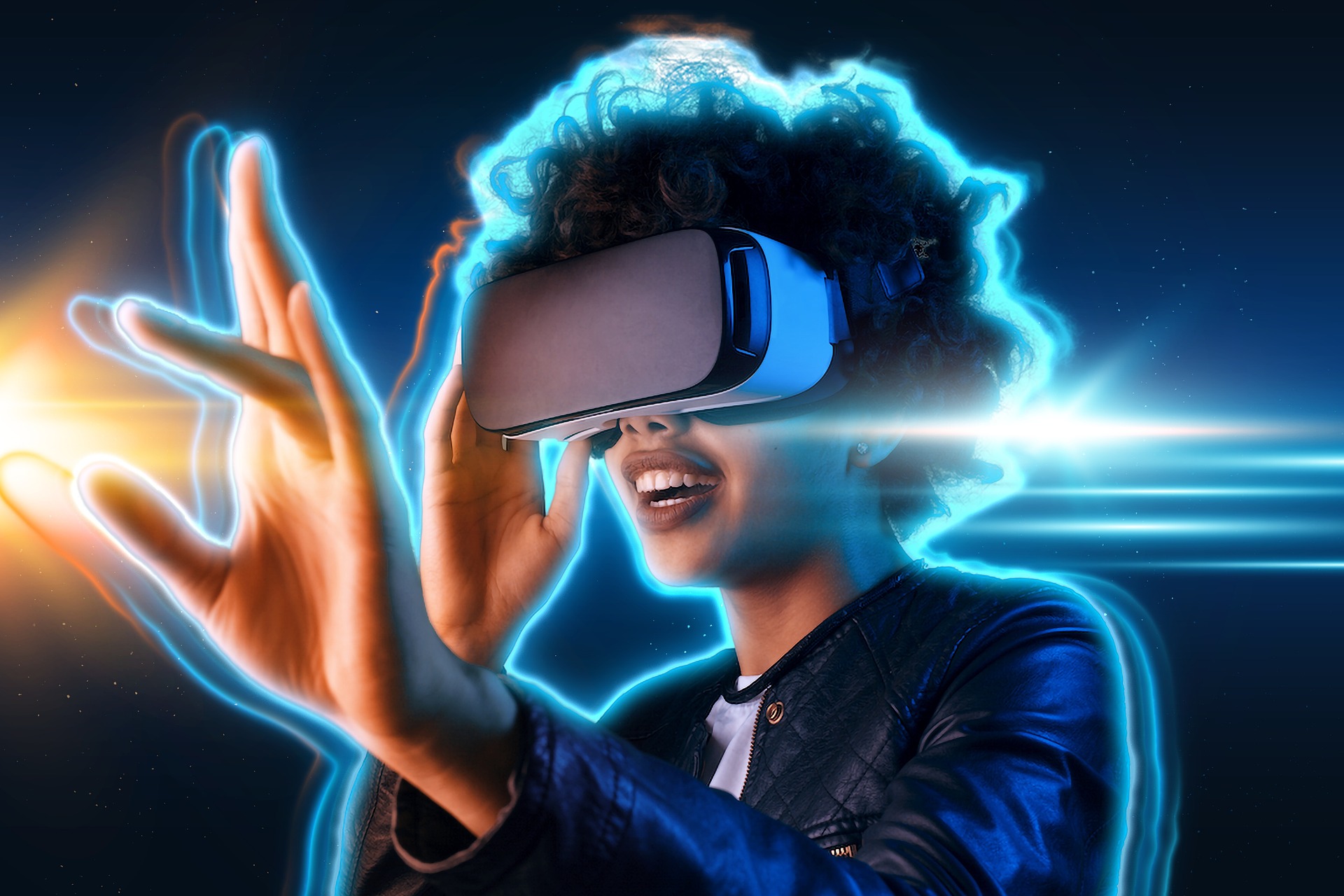Metaverse in Blockchain. “The Metaverse” is all anyone can talk about as the revolutionary new thing that will change how we live our online lives. But it seems everyone has their idea of what “the Metaverse” is—if they do.
In his seminal 1992 cyberpunk novel Snow Crash, author Neal Stephenson coined the phrase “metaverse” for the first time. Okay, so tell me about the Metaverse. In the novel, a shared “imaginary realm” that is “made available to the public across the worldwide fibre-optics network” and projected onto virtual reality goggles is referred to as the Metaverse, a term consistently capitalized in Stephenson’s writing. Virtual reality (VR) and augmented reality (AR) can thus be used to improve digital environments.
The prefix “meta” signifies “beyond,” while the word “verse” means “universe.” The term “metaverse” can also be used to describe virtual environments where users can go and engage with one another; for example, a place where developers can construct structures, parks, signage, and other non-existent elements that do not exist in the real world. There are famous neighbourhoods; enormous light shows above, and free-combat zones where people can go hunting and killing one another while disregarding the laws of three-dimensional spacetime.
The company’s plans to build a more expansive Facebook, including features for social presence, office work, and entertainment, were announced by Mark Zuckerberg in July 2021. On October 28, 2021, Facebook officially became Meta, reflecting the company’s growing dedication to building a metaverse. Learn about Metaverse in Blockchain startups, crypto metaverse projects, and the inner workings of the metaverse in this post. We’ll also go over metaverse coins, tokens, and wallets.
Core Attributes of a Metaverse
Science fiction is where most people get their ideas about the Metaverse. It is expected to portray the Metaverse in this light as a digital “jacked-in” internet, where real life coexists with a virtual (often amusement park-like) environment. Therefore, the fundamental characteristics of the Metaverse are:
-
Synchronous and live: While pre-scheduled and self-contained events will occur, the Metaverse will be a living experience that exists continuously for everyone and in real-time, just as it does in “real life.”
-
Persistent: It never “resets,” “pauses,” or “ends” — it just keeps going endlessly.
-
Available individually and concurrently: Everyone can be part of the Metaverse and participate in a specific event/place/activity simultaneously and with their agency in the Metaverse.
-
A fully functioning economy: Individuals and businesses should be able to create, own, invest in, sell and be compensated for a vast array of efforts that produce value that others recognize.
-
An experience should span both digital and physical worlds, private and public networks/experiences, and open and closed platforms.
-
A wide range of contributors: It should be filled with content and experiences developed and operated by many contributors, some of whom are self-employed. In contrast, others are informally organized or commercially oriented businesses.
-
Offer unprecedented interoperability: It should offer remarkable data, digital items/assets, content, and other interoperability between each of the experiences—a car developed for Rocket League (or even Porsche’s website) could be transported to work in Roblox. Today’s digital world operates as if it were a shopping mall, with each store having its own money, unique ID cards, proprietary units of measurement for items like shoes or calories, and various dress rules, among other things.
What is not the Metaverse?
The parallels above point to the Metaverse, but that doesn’t mean they constitute it. Many online games and virtual environments have featured AI-controlled characters or those populated by “actual” individuals in real time for quite some time. The term “virtual world” refers to a made-up, artificial universe that serves a specific purpose (e.g., a game) rather than a “meta” reality.
Also known as “proto-metaverses”, are online content experiences such as Second Life. While virtual worlds provide nearly real-time content updates, they fall short in the Metaverse due to issues such as digital avatars representing humans, a lack of game-like objectives or skill systems, and virtual hangouts. This means that “a virtual space” does not constitute a metaverse.
One way to immerse oneself in a computer-generated environment is through virtual reality (VR). Being aware of one’s digital surroundings is insufficient to define a metaverse. Moreover, a metaverse is neither a game nor goal-oriented, even though it may have game-like intentions, incorporate games, and employ gamification. Because of this, we can rule it out as “virtual reality” and “a game.”
A metaverse is not the same as a “virtual theme park” because it lacks the central programming found in Disney World. Likewise, a metaverse is not just another “new app store” but represents a radical departure from the priorities, paradigms, and architecture of the modern internet and mobile devices.
How Does the Metaverse Work?
The first option is a blockchain-based metaverse startup using nonfungible tokens (NFTs) and cryptocurrency. On platforms like Decentraland and The Sandbox, users can purchase virtual land and design their own environments. The second school of thought defines the metaverse as any kind of virtual environment where users can congregate for purposes such as commerce or leisure. In July, Facebook Inc. announced a metaverse product team.
Even though many metaverse services provide free accounts, users must use cryptocurrencies to purchase or trade virtual assets on platforms built on blockchain technology. You can’t buy and sell virtual assets on some blockchain-based platforms unless you have crypto tokens based on Ethereum, including MANA on Decentraland and SAND on The Sandbox.
The Decentraland platform allows users to buy and sell NFT artworks and host virtual concerts and shows. The value of land has risen dramatically in recent years, so users can also profit from trading it. One way for Roblox users to make money is by charging other users to play their games.
What can you do in the Metaverse?
Among the many crypto metaverse projects, one can experience virtual concerts, fashion shows, and vacations. The Metaverse has the potential to revolutionize the work-from-home model during the COVID-19 pandemic. You may now download Facebook’s free open beta Horizon Workrooms on Oculus Quest 2 in regions that allow it.
Metaverse in Blockchain: With Workrooms, a virtual meeting area, you and your colleagues can work together more efficiently regardless of where you are. You can join a virtual conference as an avatar or connect to the room via video call on your laptop or PC. Bring your computer and keyboard into virtual reality to work on projects together, have expressive conversations that feel more natural than in person, or use a large virtual whiteboard.
Tech companies, however, still need to figure out how to integrate all of their online platforms. For this to be successful, rival technology platforms will have to settle on a set of rules to prevent users from hopping between different metaverses, such as Facebook’s, Microsoft’s, or others.
Is Crypto the Key to the Metaverse?
Among the many crypto metaverse projects, one can experience virtual concerts, fashion shows, and vacations. The Metaverse has the potential to revolutionize the work-from-home model during the COVID-19 pandemic. You may now download Facebook’s free open beta Horizon Workrooms on Oculus Quest 2 in regions that allow it.
With Workrooms, a virtual meeting area, you and your colleagues can work together more efficiently regardless of where you are. You can join a virtual conference as an avatar or connect to the room via video call on your laptop or PC. Bring your computer and keyboard into virtual reality to work on projects together, have expressive conversations that feel more natural than in person, or use a large virtual whiteboard.
Tech companies, however, still need to figure out how to integrate all of their online platforms. For this to be successful, rival technology platforms will have to settle on a set of rules to prevent users from hopping between different metaverses, such as Facebook’s, Microsoft’s, or others.
Concerns with the Metaverse
Although they may not have widespread support, a handful of other ideas could form the basis of the Metaverse. One such worry is whether or not each participant would maintain a consistent online persona (or “avatar”). This might be helpful, but it’s unlikely to happen because the leaders of the “Metaverse era” will all want their own unique identity systems.
Metaverse in Blockchain: For instance, it’s common today to have multiple account systems coexisting with restricted data sharing and access; nevertheless, none spans the entire web. For example, you can use your Meta ID (formerly Facebook) to access an app associated with your Gmail account, even though your iPhone is linked to an iOS account.
Another contentious issue is the level of interoperability that must be present in a metaverse for it to be considered “the true Metaverse,” as opposed to merely an advancement of the internet in its current form. Like in Ready Player One, many wonder if there can be more than one operator in a genuine Metaverse.
Some think that for something to be considered a Metaverse, it must have a highly decentralized system that relies on community-based protocols and standards, much like the open web and an operating system or platform that is “open source” (although this doesn’t mean that there can’t be dominant closed systems in the Metaverse).
Is the Metaverse only a Facebook initiative?
No, Facebook isn’t the only one involved in the Metaverse. Additional companies that endorse the metaverse include chipmakers Microsoft and Nvidia. Video gaming companies are also at the forefront. The renowned video game developer Epic Games has secured $1 billion in investment capital to support its ambitious plans for the future of the metaverse.
Another prominent platform, Roblox, defines the metaverse as an environment “where people can come together within millions of 3D experiences to study, work, play, create, and socialize.” Even consumer-facing companies are getting in on the action. In June, the Italian fashion house Gucci collaborated with Roblox to provide accessories that could only be purchased digitally. Clinique and Coca-Cola used digital marketing tokens as entry points for the metaverse.
Future of the Metaverse
It is also unknown how long it would take to build a realistic metaverse that replicates real life. To enable users to engage with the environment, several blockchain-based metaverse platforms are now developing augmented and virtual reality technologies. According to PwC, a multinational accounting and advisory organization, the global economy will gain $1.5 trillion by 2030, a significant increase from $46.5 billion in 2019.
In preparation for the future growth of the cloud computing and virtual reality industries, Facebook Inc., Google (owned by Alphabet Inc.), and Microsoft Corp. have invested in related startups. Just as there was significant money for companies that dominated “the internet,” there will be massive money for firms that can monopolize certain regions, whether supporting platforms or services like payments, subscriptions, or advertising.






